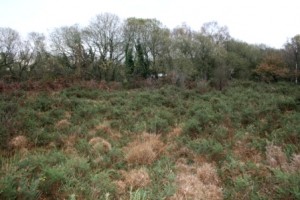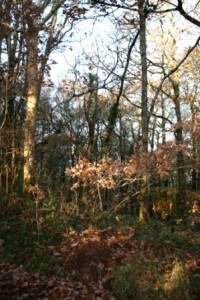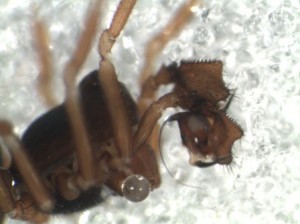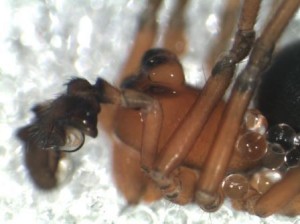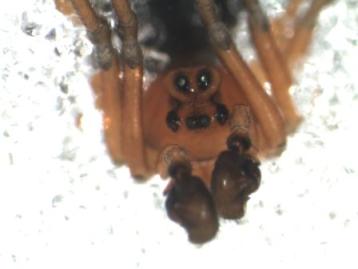
It’s been a while since my last blog in November about the Wood Ant Symposium, but that’s not to say that I haven’t been busy! I’ve been working my way through thousands of pickled insects, as well as making databases, giving presentations, writing articles…certainly no time to be bored!
I’ve even had a trip to Plymouth for two days to visit the narrow-headed ant (Formica exsecta) population on Chudleigh Knighton Heath, the last population in England. I met up with Andrew Whitehouse at the Buglife office and Stephen Carroll who has been helping to monitor the ants which live on a Devon Wildlife Trust reserve. He goes out every year to visit the nests, and this year the nests have increased in number, mostly due to a large number of “satellite” nests – nests which are created when a nest “buds” off to form two nests. It was really interesting to see the habitat the ants live in at Chudleigh, it felt quite different to the habitats we find them in Scotland – oak woodland and heath with a lot of birch and gorse scrub. A proportion of the nests are in areas experiencing a lot of scrub encroachment – not good news for this sun-lover. The Wildlife Trust are mowing the heath to create open, short habitat so it will be interesting to see how the ants react to this.
We also visited one of the narrow-headed ant’s former haunts – Bovey heath – and this felt much more like the habitat we find them in in Scotland – Calluna heath with birch and pine trees. There is potential to try and re-introduce the ants back onto Bovey heath using mated queens which will be very exciting! It is hoped that the team monitoring the Chudleigh population and those working on populations in Scotland can work together and share information which will hopefully shed some light on how the population is changing and how the ants react to management.
I also got to see oak woodland that is home to Formica rufa – the red wood ant – which isn’t present in Scotland. It was a little weird seeing the mounds in oak woodland when I’m so used to seeing wood ants in pine forest. The nests looked quite similar, though no pine needles of course, just small twigs and vegetation.
Because of my training with the arachnologist Mike Davidson, I also managed identified the spiders I caught in the trap to species. For spiders, you need mature individuals and you need to look at their genitalia to identify them to species. However, spiders don’t have conventional genitalia which makes them all the more interesting! The males have what look like “boxing clubs” on their first pair of legs, which are not walking legs but small appendages called pedipalps. When mature these are swollen and are extremely complex structures with fancy ducts, spines and coils. Below is a pic of a spider called Cnephalocotes obscurus showing his pedipalps. They have strange saw-like edges and are very distinctive. The pedipalps are used to transfer sperm externally to the female’s genitalia, which is known as the epigyne. I like to think of this as a spider bellybutton, as its kind of where you’d imagine the girl spider’s belly button to be! The epigyne is on the underside of the abdomen and is specially designed to fit the male’s pedipalps and absorb his sperm. Each species has unique epigyne and pedipalps, allowing us to use these features to identify them.
Some male money spiders (very small spiders in the family Linyphiidae) have strange structures on top of the head where they eyes are. Below is a photo of one of my spiders, Hypselistes jacksoni. He’s only a few millimetres long but he’s fantastic! He has strange bulbous projections around his eyes. I’ve a new found love for money spiders; they may look small, dark and indiscriminate with the naked eye but see them under the microscope and they’re completely amazing!
Stay tuned for my final blog coming soon…..booohooo!
Hayley
Caledonian Pinewood Invertebrates

